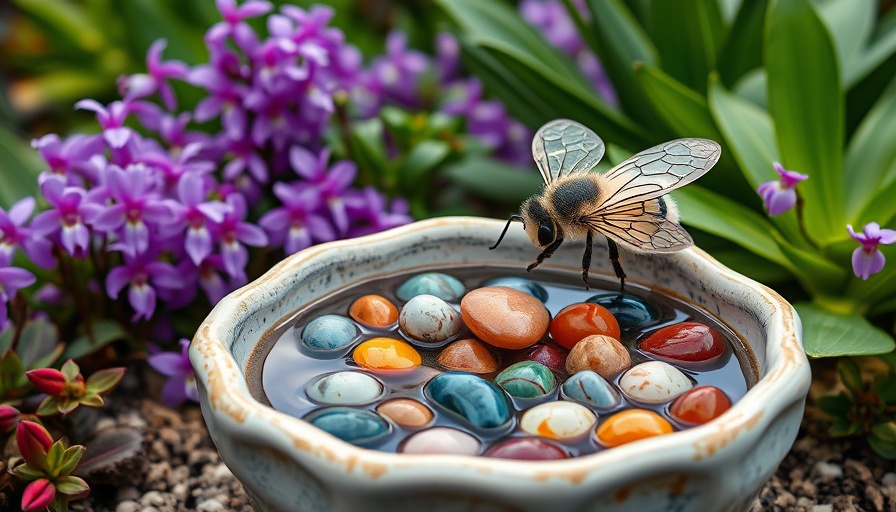
Creating a Welcoming Oasis: The Importance of Bee Baths
In the hustle of gardening, we often focus our attention on planting and landscape design, forgetting that the health of our gardens also relies on equally crucial elements, such as water for pollinators. A simple yet effective way to support these vital creatures is through a DIY bee bath. This article walks you through the creation of a bee bath and highlights its importance in your local ecosystem.
Why Bees Matter to Your Garden's Ecosystem
Bees are not just visitors but essential partners in maintaining garden health. They contribute to the pollination of about 75% of the fruits, nuts, and vegetables we enjoy, making them integral to our food supply. Additionally, bees help in supporting the growth of plants that feed wildlife. Consequently, providing bees with water is equally important as planting bee-friendly plants.
Easy Steps to Make a Bee Bath
Making a bee bath is a straightforward process, requiring just a few materials and minimal time. All you need is:
- A shallow dish
- A plant pot as a base
- River stones for perches
- Fresh water
To construct your bee bath, turn the pot upside down and place the dish on top. Fill the dish with an adequate amount of water, ensuring that it remains shallow enough for the bees to perch safely. Adding river stones gives the bees ample landing spots, creating a safe drinking environment.
Maintaining Your Bee Bath for Healthier Pollinators
Regular maintenance is vital to prevent the growth of harmful microorganisms. To keep your bee bath clean and safe, change the water daily and clean the bath weekly. Providing fresh water will help ensure that the bees remain healthy and draw them to your garden all summer long.
Connecting with Nature: The Emotional Benefits of Creating a Bee Bath
Engaging with pollinators can deepen our connections to nature and enrich our gardening experiences. Watching bees visit your bath can evoke feelings of tranquility and joy, providing a peaceful environment to unwind after a busy day. Moreover, inviting bees into your space fosters a greater sense of ecological responsibility, enhancing the beauty of your garden.
Common Misconceptions About Pollinators
Many people fear bees, believing they are aggressive and likely to sting. However, the truth is that bees are typically harmless. They're primarily focused on collecting nectar and pollen, and their inclination to sting diminishes when they're busy. Educating yourself and your family about the vital role that bees play in our gardens encourages a friendlier relationship with these hardworking insects.
More Ways to Help Pollinators Thrive in Your Garden
Beyond a bee bath, there are many ways to create a welcoming environment for pollinators:
- Plant native flowers and herbs that are rich in nectar.
- Avoid using pesticides that can harm bees.
- Create habitats with a diversity of plants.
Considering these elements will not only attract bees but also create a vibrant garden ecosystem.
The Broader Implications: Pollinators as Indicators of Ecological Health
Pollinators, like bees, serve as indicators of ecological health, reflecting the state of our environment. By fostering habitats that support these creatures, we contribute significantly to biodiversity, ensuring that our gardens provide habitat and resources for a wide range of wildlife.
In incorporating a bee bath into your gardening practices, you’re not just creating a functional piece for your garden—you're actively participating in enhancing the local ecosystem. This simple act can lead to a cascade of benefits for your plants and the local pollinator population.
In conclusion, dedicating a bit of your garden to a bee bath not only assists bees but enriches your gardening journey. So why wait? Start planning your bee bath today!
 Add Row
Add Row  Add
Add 




Write A Comment